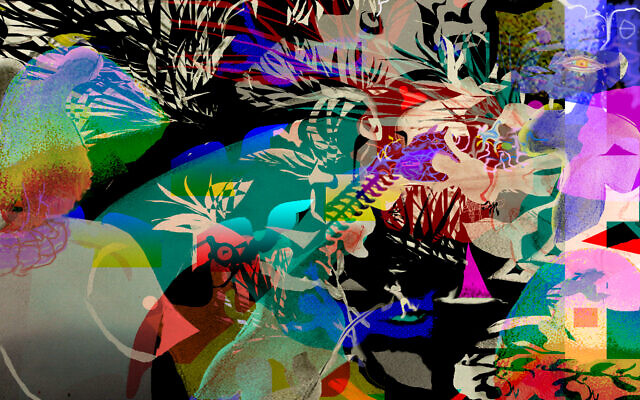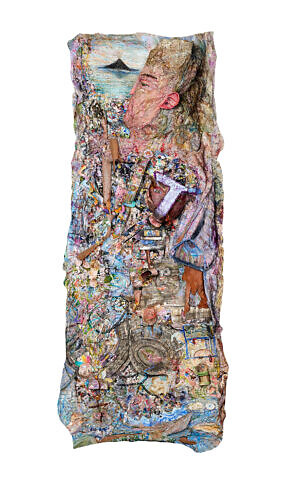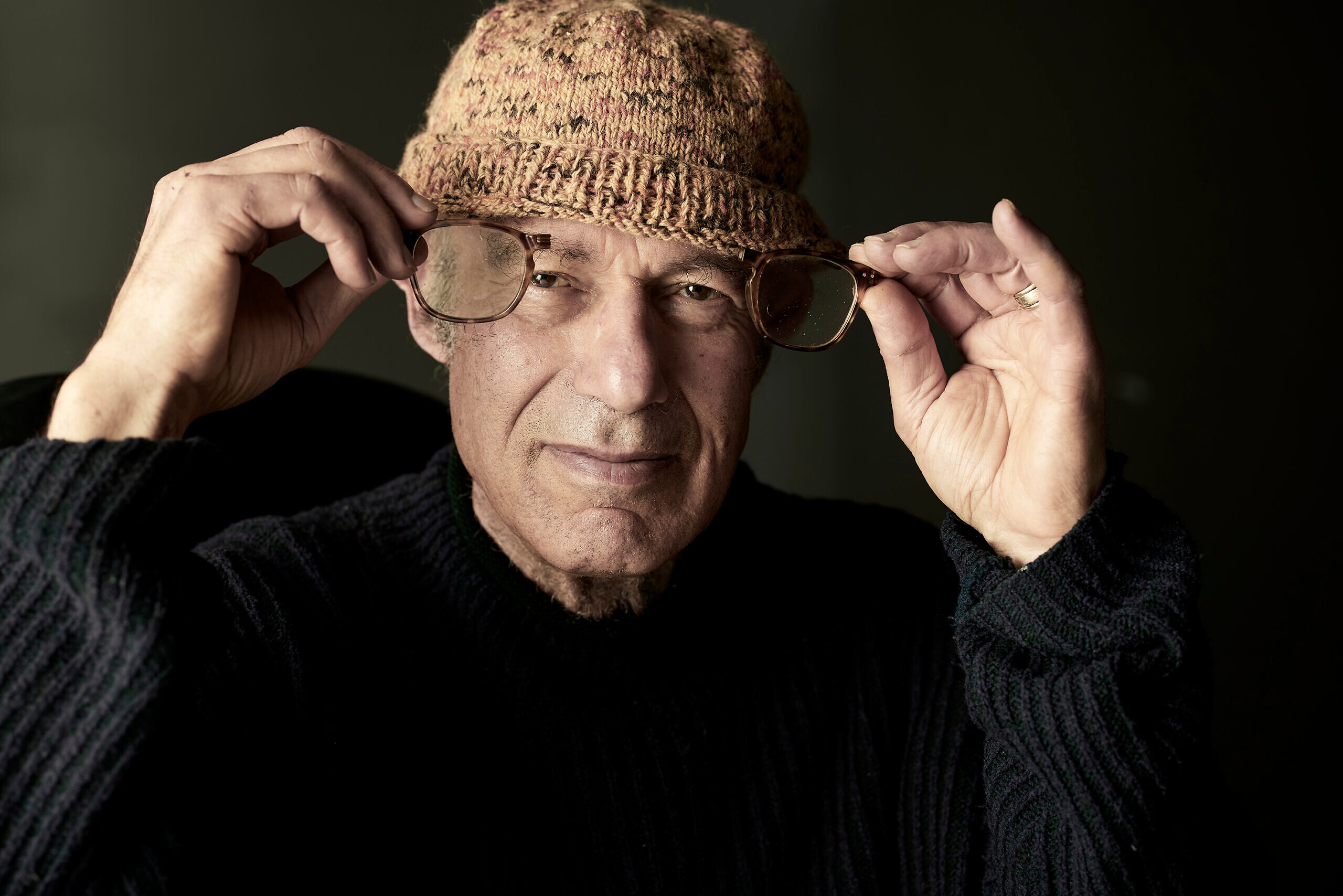Micha Nussinov grew up surrounded by nature on a farm in Israel. But he most fondly recalls a specific oak tree that became a playground for his imagination.
“We used to go down in the cart arriving to a crashing stop under the tree,” he recalled to The AJN. “It became a playground for us to keep our fantasy world alive. We had installed a platform in the oak tree that became our play watch tower, allowing us to guard and watch over the land making sure no infiltrators were coming in to invade. It was a children’s game.”
Describing himself as a shy child, it was a box camera that first helped him find his voice.
“It was a gift from my father when I turned 13, for my Bar Mitzvah. It was an opener for other worlds beyond what you see around yourself. It allowed me to choose my own view of the world. Choosing in focus, out of focus, in frame, out of frame, macro or micro, and all other angles of viewing. Through these motions you begin seeing and creating a world that you feel a part of, something you belong to,” he said. He fell in love with art and the ability to express himself in ways other than words.
The self-taught, multidisciplinary artist seamlessly and simultaneously shifts from one discipline to another, from painting to sculpture to music composition, digital collages and more.
“I don’t care about the type of material or the quality so much. For me, it’s more about being able to work and communicate through my art.”
But, he started as a film director and cinematographer.
“The move to the London Film School from Israel, was very significant for me, in terms of finding myself loving the aspect of the creation of films,” he said. “When I made my own films in Australia, back in ‘76 & ’79, I got a grant from the Australian Government on two different occasions. I made a couple of movie documentaries. One called For What which was a film about waiting for different things in life to happen and the second film was Feeling for Balance which compared people in society that are either struggling for balance in life or those who have good life balance, and you look at them side by side and realise there is a madness in all of us as well as a sanity, that sometimes tips us over, in extreme cases.”
According to the artist, he has dealt with both of those issues in his own life, finding refuge in his art studio.

So how did he move from film to art? Well, as the story goes, it all happened while Nussinov was thousands of kilometres in the air, flying to Bali.
“I saw the light and shadow of my hands and wanted to trace the different hand configurations I was making. The shadow began to form a bird-like creature that embodied the five elements – earth, water, air, fire and space.”
And the inspiration hit.
But, for Nussinov, it’s not about one specific discipline compared to the other, which is why he loves being a multi-disciplinary artist. It allows him to maintain a sense of creativity.
“First of all, it is my nature of myself as a person who has a short concentration span and being the kind of person who is often disrupted by other ideas or other things,” he explained. “The reason why I’m shifting from one discipline to another is to maintain a sense of creativity along the way. It has helped me avoid being stuck and allowing me to move on. To go for something else that I engage with… It’s kind of embedded in me that discipline and the style of the way I work, you know, it’s, trying to maintain the spontaneous relationship with things.”
The idea of a spontaneous relationship with things is also evident in Nussinov’s choice to use recycled and found objects.
“Everything you throw away has character. They’ve got shapes, you got material quality, sometimes there’s paint on them. All of the pieces are looking for a place to join in. Join in for a party, you know. So, you try to make a party for them. To be a part of something,” he said. “So you give them a new life, in some way.”
Like, for example, a piano that a bowling club was getting rid of. Nussinov used pieces of the piano in his sculptures, which ended up being exhibited at Sculpture by the Sea in 2002.

It’s also about the randomness of the objects and materials that he collects. He said, for example, that sometimes trees that have been chopped down appear at his studio. He’ll look to use these for wood carvings. Or some glass may be used to do an etching.
“I don’t care about the type of material or the quality so much. For me, it’s more about being able to work and communicate through my art,” he explained.
Recently, Nussinov held an exhibition called Perpsectiva, a collection of works that span over many years. While some are recent, others were created 30-odd years ago. For people walking through the space, it was an immersive experience.
“Perspectiva is about being able to show the work in a multitude of elevations. We have the floor as well as the sky (ceiling) so we can hang things in the studio and put them in perspective to other things,” he described. “So, the eyes keep changing, the viewpoint keeps being disrupted by so many different objects that have a world of their own, but then they are part of the whole space, here in the studio.”
Nussinov said it’s like entering a stage where the audience become the stars.
“They can get lost in some of my fantasy worlds very easily. The works take them to other worlds, not necessarily defined as life on earth. It’s more about a journey into discoveries and relationships. So of course, you create something and then you want the audience to take part in it. And I’m leading them on different journeys. But it’s up to them to make the story,” he said, continuing to explain that each person who visited the exhibition went on a different journey, experiencing the works in any way they liked.
Nussinov’s point of difference is that he was self-taught, which involves constantly leaning on and into his emotions.
“My process is quite emotive. It comes from inside me. How I taught myself drawing and painting was by observing things, storing them in my mind, and then placing them in different scenes. Instinctively feeling the need to express myself. So, it’s like I created a detailed puzzle from chaos and from nothing,” he said.
Also, he said, it means turning up to work six days a week, being consistent and enjoying yourself.
“You create a relationship with any work that you do. And you like what you’re doing and you don’t necessarily put quality judgment on the work.
For more information about Micha Nussinov, visit his website.


comments